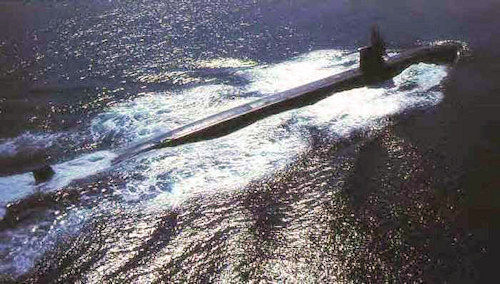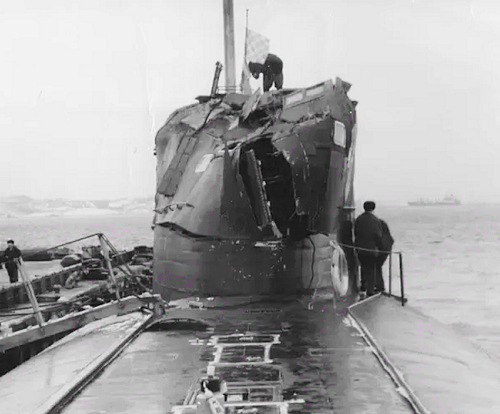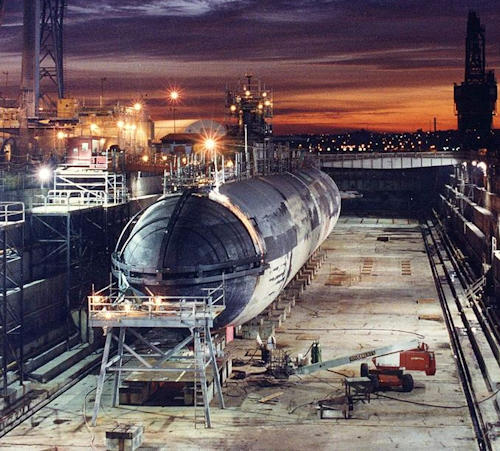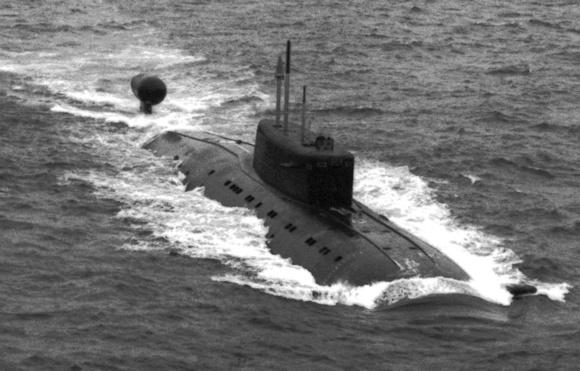There are days that pass quickly without most people almost realizing it; however, for some, those same days can instead mark the boundary between life and death, between victory and defeat. For the crew of the Russian submarine B-276 Kostroma and for veterans of the USS submarine Baton Rouge, the February 11 of each year represents just this kind of day.
Built between 18 November 1972 and 26 1975 April, and officially entered the 25 1977 July, the USS Baton Rouge it was the second submarine belonging to the class Los Angeles to become operational at the US Navy and, at the end of the 70 years and during the 80 years, it accumulated an important number of operational cruises, earning two collective merit awards.
Also known as the "X IlUMX class", i Los Angeles they were designed and then built in large numbers starting from the 70 years and up to the XX century 90 years as class successors Sturgeon and presented considerable improvements both in the field of silent propulsion and in the electronic instrumentation on board, rapidly establishing itself as the most advanced underwater attack nuclear vessels in the world. Moreover, the intrinsic technical qualities and operational flexibility also made them excellent candidates for strategic reconnaissance missions and spying within enemy territorial waters. Between January and February of the 1992, less than two months after the disintegration of the Soviet Union, the USS Baton Rouge he was posted in the Barents Sea, as part of the surveillance operation renamed "Holy Stone", for what would become his last operational cruise.

To date, the objectives of the submarine mission to stars and stripes have not yet been disclosed, although they probably concerned the recovery of some submarine electronic spy equipment or the monitoring of naval activities of Russian bases orbiting around the city of Murmansk. Whatever the purpose of his cruise, the 11 February his "route" literally "impacted" that of another submarine, which would prove harder than the proverbial floating iceberg in the ocean: the B-276 Kostroma.
Second submarine of the class named by the Soviets, "Project 945 Barrakuda"(" Sierra I "class in NATO code), the B-276 Kostroma was launched in July 1986, and accepted into service in September 1987, as a nuclear attack boat specialized in "hunting" to other underwater units; therefore, at the time of the fateful "meeting", he had less than five years of operational activity. Although less "tested" than the USS Baton Rouge, the B-276 Kostroma it nevertheless belonged to one of the last classes of submarines produced by the Soviet Union and its project had been able to benefit from the huge steps forward that Soviet technology and shipbuilding had accomplished in the last two decades of the "Cold War". In particular, a distinctive feature of the 4 class boats Sierra I and II (opening photo) was to be coated with a layer of rubber tiles specially designed to absorb sonar waves and make it more difficult for the opposing boats to detect. The "Sierra I and II" were also equipped with new propulsion systems which, at least at low speeds, made it much more difficult for the underwater units in service at the NATO navies to be identified, while the double hull in resistant titanium, it greatly increased its survivability in the event of an attack by means of light torpedoes or heavy torpedoes but without a warhead with high perforating capacity. At the same time, however, the "Sierra I and II", like all other Soviet submarines, both prior and contemporary, suffered from all the limitations that the home industry recorded in the field of electronics, being therefore equipped with sonar and electronic suite not up to the most modern standards, which greatly limited its potential, on paper remarkable.

The strengths and weaknesses of the constructive philosophies of the two classes of submarines emerged when, the 11 February of the 1992, the USS Baton Rouge and the B-276 Kostroma they crossed their routes near the island Kildin, not far from the Russian naval base of Severomorsk, near Murmansk (slightly inside the Russian territorial waters). Both American and Russian independent and independent sources diverge greatly on the exact course of events as well as on the reason for the deployment of the two submarines in such a strategic area, moreover close to the main Russian naval base, although it concerns the B-276 Kostroma it is easy to hypothesize that it was there to protect access routes from a strategic position (that which in the jargon of submarines all over the world is called "ambush position"). Given the very low depth of the seabed it is also possible that none of the two boats were really aware of the presence of the other saw that during navigation, both were using the passive sonar and proceeded at a reduced speed in order not to run into dry or other underwater obstacles. Given the peculiar dynamics of the accident, even several Russian analysts have openly questioned whether the two submarines were engaged in the classic "cat and mouse" scenario so common during the "Cold War" period and that in the past had caused numerous accidents.
Whatever the symptoms were, at 08: 16 afternoon the B-276 Kostroma began a rapid emergence maneuver, going to impact the USS with its own turret hard Baton Rouge. Unlike what some sources say, there were no dead or serious injuries in any of the two boats involved, although it is easy to guess that the clash of these two "bests" from 16.000 tons of total deployment (9.627 for the USS Baton Rouge and 9.100 for the B-276 Kostroma) must surely have left a good number of sailors and officers bruised on both units. Immediately after the fight, the two submarines separated, navigating to the surface, to reach the respective bases and estimate the damage suffered.

Despite apparently the USS Baton Rouge had suffered minor damage, a subsequent accurate investigation carried out at the shipyard of Mare Island found that the violent clash with the Russian boat had compromised the single steel hull with the result of making the American submarine a "total virtual loss" (in other words, though the USS Baton Rouge could still sail on the surface or periscope, any attempt to dive to normal operating depth would have caused the hull to collapse with consequent loss of the unit). After 3 years spent in the dock and endless discussions about the costs of a possible repair and modernization, the USS Baton Rouge it was finally removed from the US Navy registers, transported to the Puget Sound shipyards and dismantled here (picture on the right); had sailed the seas only for 15 years, against an average of 32 years of its class "brothers" Los Angeles.
As for the B-276 Kostroma, the violent bump with the American boat led to the almost complete crushing of the tower, but the double titanium hull, designed specifically to withstand even greater shocks and stresses, had performed its duty very well. The boat was transferred to the Nerpa shipyards of Snezhnogorsk the 28 March of the 1992 and within the 29 of June of the same year all repairs were completed. The boat was then renamed "K-276 Krab" briefly, before returning to its old name, and subsequently underwent a new cycle of works and modernization, again at the Nerpa shipyards, which ended in the 2005. Today, the B-276 Kostroma, as well as its 3 "brothers" of the classes Sierra I and II, is still in service with the Russian navy and, after the dismantling of its rival USS Baton Rouge, was decorated by his crew, on the front of the tower rebuilt, with a big star with a "1", a tribute to the only submarine of any world power that was able to permanently put out another submarine after the end of the Second World War.
Photo: web / US Navy / US DoD












